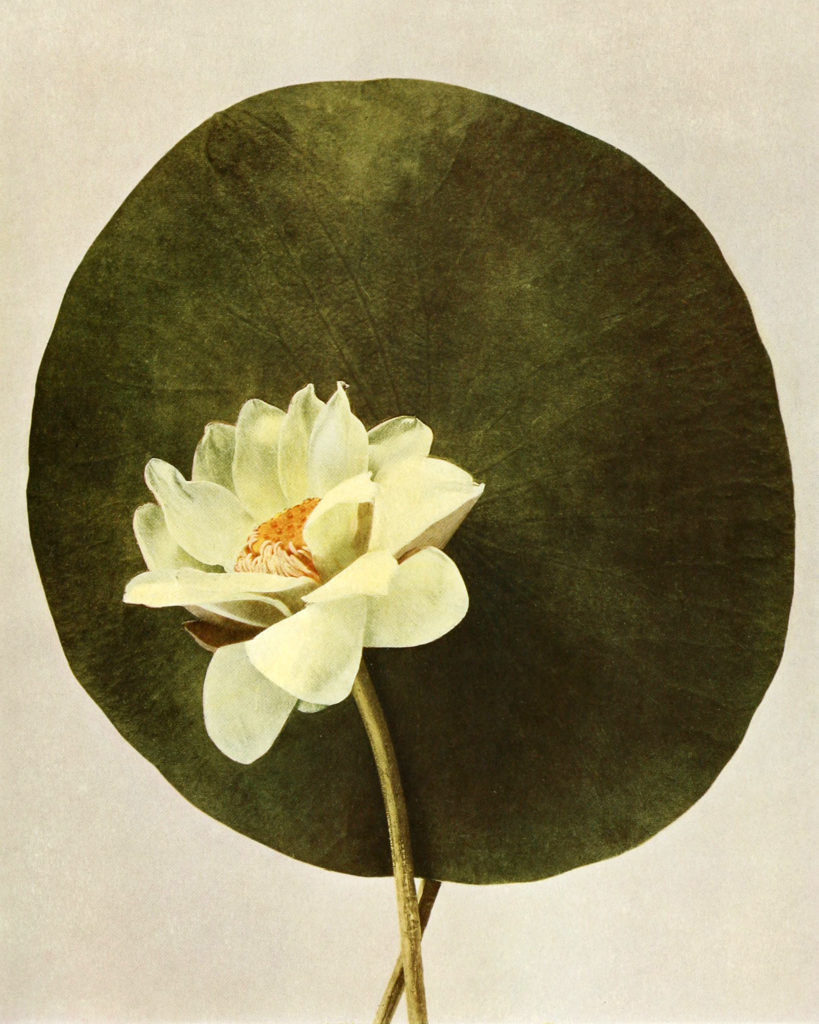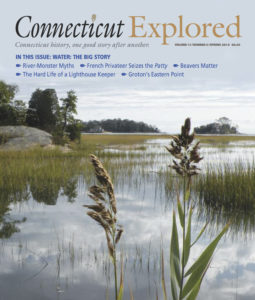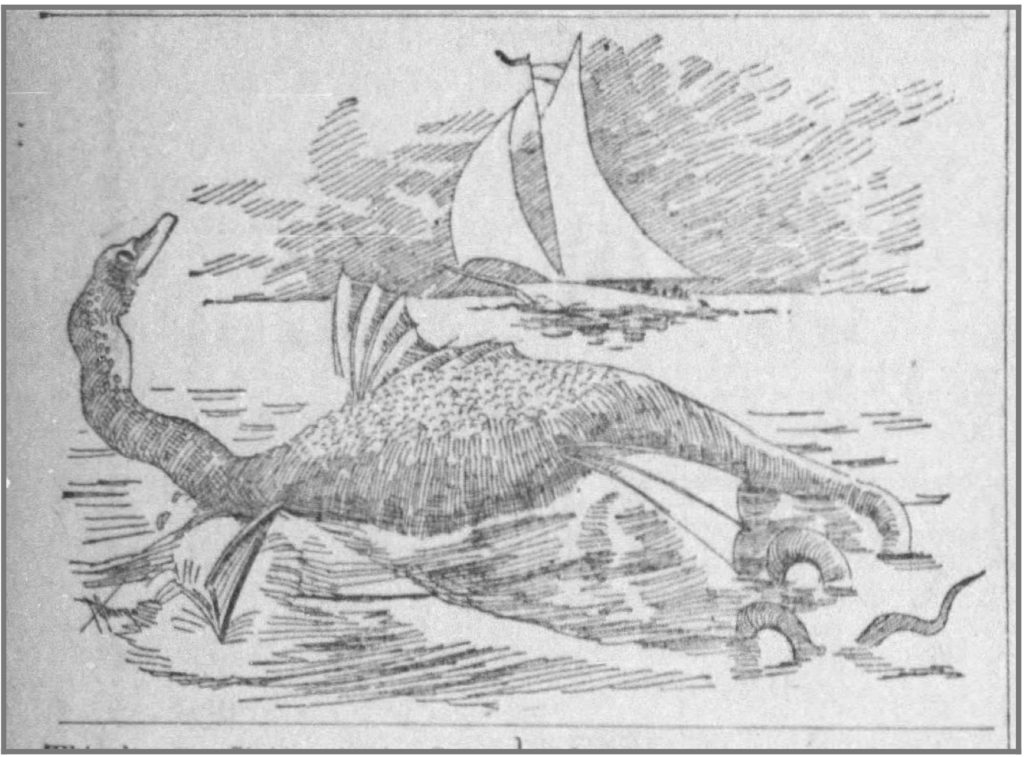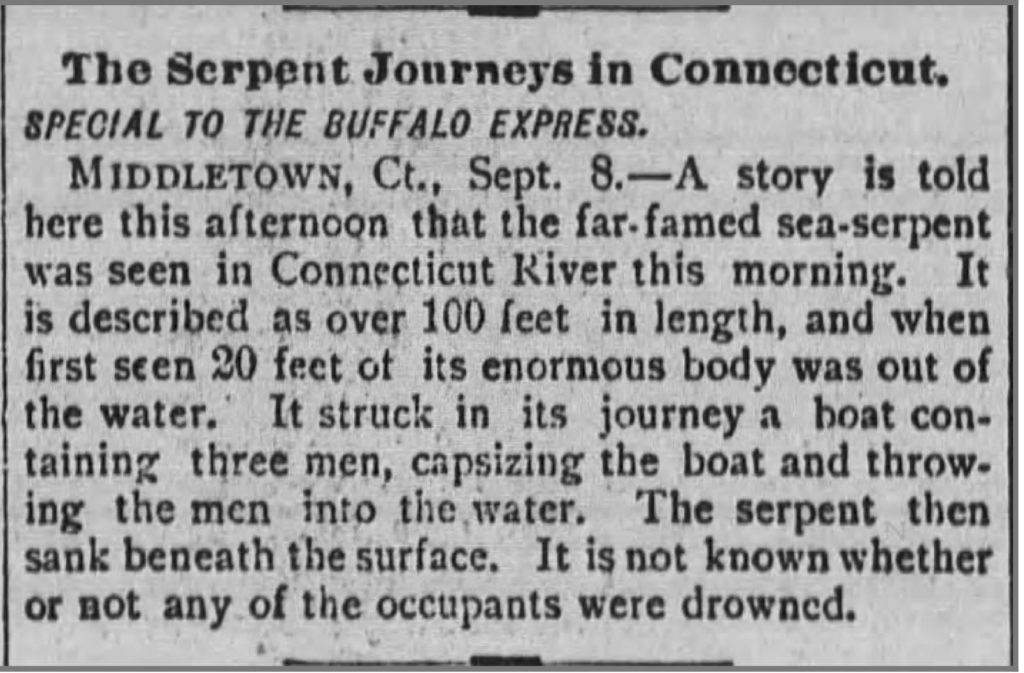(c) Connecticut Explored Inc. Spring 2019
Subscribe/Buy the Issue!
Connecticut is rich in narrative folklore—the legends, myths, and other traditional tales often passed on for generations. This lore is important to understanding a place and its people. Sacred narratives told about divine beings by pre-colonial indigenous peoples, fantastic yarns about heroes during the American Revolution, and recent accounts of hauntings shared by teenagers via social media—these stories are an emotionally powerful means to shape attitudes, express desires and anxieties, convey values and beliefs, and foster collective identities. Folklore is, furthermore, an ever-evolving element of cultural life. It reflects and influences social changes over time, even if it is primarily told for entertainment.
The Connecticut River Valley is a wellspring for tales both ancient and new—celebrated in a special exhibition, Connecticut River Myths & Legends, at the Connecticut River Museum May 10 to October 14, 2019. As a longstanding site of settlement, conquest, industry, and immigration, all four states that touch the 400 miles of the great river offer stories of adventure, mystery, and supernatural foreboding. In Connecticut alone, the folklore of the river and its surrounding lands is inexhaustible. Folk narratives found here are nourished by local, regional, national, and even international storytelling traditions. The exploration of these stories and the social contexts that produced them reveals a fascinating vantage point on the history of the state. I share with you two tales that epitomize the historical legends of the lower Connecticut River and illustrate how local lore may connect to broader—even global—themes.

American lotus, Nelumbo lutea, from Homer D. House, “Wild Flowers of New York, Part I” (University of the State of New York, State Museum, Albany, 1918)
The Selden Cove Lotus
This is a story that has now passed into obscurity but was a popular tale from the late 19th to the early 20th century.
Anticipation was high for a very special exhibition in the late summer of 1953. As the Deep River New Era explained on June 25, “There is a tradition that once in 25 years the Egyptian Lotus blooms in a cove of the Lower Connecticut River. The location is Selden’s Cove.” Selden Cove is nestled in Lyme and adjacent to Selden Neck State Park. Its mysterious flower was set to bloom that year in July or August.
The article, written by Ernest Libby, furnished remarkable details. In 1878 a doctor from Essex went hunting in Selden Cove. There, and much to his surprise, he discovered enormous lily pads from which a purplish-white blossom emerged, far greater in size than he had ever seen. He secured a few samples, returned home, and scoured every book he could find about the natural history of Connecticut for information about this plant, all to no avail.
Discouraged, the doctor enlisted a friend knowledgeable in botany, and eventually the two of them concurred that the specimen fit only the description of the Egyptian lotus, a native plant of the Nile River. They could not further ascertain, however, how such a plant came to thrive in a secluded and remote cove so far from its homeland.
Years passed, and one of the men spoke of the perplexing discovery to a worker at a Hartford dye company. “The Hartford man,” summarized Libby, “told how in former years schooners sailed into all parts of the world and came back into the Connecticut River loaded with oriental woods and all sorts of material for dyes.” Just before the U. S. Civil War, paper mills on the river were in need of cotton and linen rags for pulp. And, as the story continued, New England shipmasters (industrious Yankees, after all) realized that the fabrics abandoned by plunderers in the tombs of Egyptian pharaohs could be put to use in those mills.
“Many of these romantic cargoes,” Libby explained, “were unloaded here at the Essex dock, and as the bales were thrown onto the docks it is easy to imagine that a few seeds of the lotus lily caught in some of the bales dropped out.” The winds and the tides conspired to deliver those seeds upriver and into Selden Cove, where they awoke and took root as if they were safely in the waters of Africa.
The notion that an Egyptian lotus bloomed in Selden Cove was indeed announced in The Hartford Courant on August 13, 1878 and had its antecedents in accounts published in the late 1860s. Starting as early as 1867, the blooms were spotted annually, and frequent mention was made of them in Connecticut and national newspapers and magazines. They brought a modicum of fame to the modest cove for several decades.
Accounts varied. The Courant’s 1878 story attributed the discovery to Charles Holmes of nearby Hadlyme, who had dropped off specimens at the newspaper’s office. According to The Courant, the blossoms were a pale buff color and considerably larger than the American yellow pond lily, with leaves “like great elephants’ ears.”
The Courant also assured readers that the plant could only grow in Selden Cove and that attempts to transplant it to Bushnell Park or Cedar Hill Cemetery in Hartford, or even to Hamburg Cove just two miles down the Connecticut River, had failed. The only other known location of its existence was, for some reason, the North Carolina coast.
Not surprisingly, its flowers were much sought after and boasted a premium cost. The Courant reported that two dollars was a common price, a considerable sum at the time. The article also mentioned that members of the Lorillard family of New York (wealthy heirs of a tobacco empire) had paid 10 dollars apiece for them.“There is no explanation of how the plants happened to start in Selden’s Cove,” that early article continued, “though it is tradition that the seeds of the Egyptian lotos [sic]fell there or blew there from some shipload of Egyptian rags that was bound up the river.”
Libby’s 1953 New Era article asserted that the lotus flower bloomed once every quarter century. It bloomed, Libby assured readers, in 1903. In 1928 one of the sons of the doctor or the botanist (Libby was not clear who) hired Essex blacksmith James Lord Pratt to ferry him to Selden Cove in anticipation of a new bloom. “Unfortunately,” Libby concluded, “that is as far as the record takes us.” Pratt took a company of people to the cove, the article said, but while they were there, “the gasoline in his boat exploded and badly injured some of his guests.” Libby could not help but speculate how fine a story it would make if the spirit of an Egyptian deity was guarding the secret of the cove and ready to defend the lotus by curses and by accidents.
In yet another article, Herbert Stoeckel reported in The Courant on September 27, 1953, “there were large green leaves or pads aplenty but not a single flower.” Stoeckel reiterated the main elements of the legend as told to him by one “Hartford Oldtimer” (a frequent pseudonym for his informants). “Oldtimer” confirmed that shortly after the Civil War the mills faced a shortage of materials and that vigilant Connecticut skippers supplied them with rags from Egypt. The seeds came with this cargo to Essex and were carried upriver by the tide to the cove, “Oldtimer” claimed.
Stoeckel set out to explore the matter himself, enlisting as his guide Jules von Rebhan Jr. of Hadlyme. But Rebhan offered a different explanation. “According to his version,” Stoeckel wrote, “the cargo of the brig was Egyptian cotton, destined for cotton mills in Moodus, and the ship more likely tied up at East Haddam dock. The seeds, obviously of more recent date, were in the bales. However, these seeds also seemed to have the same marked preference for Selden’s Cove as their future Nutmeg habitat and floated downstream and therein.”
Such alterations in a legend are common. Stories evolve, and storytellers adapt and alter them to suit new audiences and interests. Newspaper reports often capture changes as they are passed on in an oral tradition. In this instance the nearly nine decades between the introduction of the legend and the anticipation of 1953 provided ample time for narrative elements to metamorphose.
The Selden Cove lotus does have a basis in reality. As early as the 1840s botany manuals recognized that the plant in question was the American lotus (Nelumbium luteum) or the water chinquapin. The misidentification with the Egyptian lotus overlooked a compelling historical note: the American lotus was likely a transplant brought by pre-colonial indigenous people from places farther south as a food source—a food source that colonists missed or ignored.
But why did raconteurs and readers fantasize about an Egyptian lotus in Connecticut in the first place? The story became popular when the entire world was caught up in faddish enthusiasm around Egyptology. This was especially true after the discovery of the tombs of Ramesses the Great in 1881 and Tutankhamun in 1922. The local legend of the Selden Cove lotus had roots in international news and intrigue. It was a means to bring that excitement a little closer to home, and, as often is the case with legends, the facts could not get in the way of a good story.
The Sea Serpent
In addition to extraordinary plants, Connecticut River Valley folklore abounds with strange and mystical creatures: mesmeric snakes, a spectral black fox, the shad spirit, the dreaded glawackus, the mucket of Higganum, an alligator lurking in Bashan Lake, and even a pterodactyl soaring over Glastonbury. But perhaps no beastie is more impressive than the sea serpent that visited—or resides in, as contemporary stories assert—the waters of the Connecticut River.
According to a September 9, 1886 report in The New York Times, the creature made itself known the previous day around six o’clock in the morning. Two men from Cromwell, Silas Sage and Colonel Stocking, were crossing the river when their boat struck something lurking underneath. The impact lifted their skiff but, thankfully, did not toss them into the cold and rushing waters. Initially inspired by curiosity rather than daunted by dread, they investigated the source of the commotion. “They heard a loud noise,” The Times reported, “and looking up the river they saw that the water a few rods above them was churned into foam. Out of the froth rose a big black head as large as a flour barrel and with eyes as big as small plates.”
The creature lifted its thick neck 10 feet out of the water, signaling an overall length of at least 100 feet. Sage and Stocking did not wait to learn its intentions. They rowed with frightened fury back to Cromwell, The Times noted, shouting loudly to attract the attention of anyone who might help them in their grave time of need. When they arrived on shore, where a small crowd had gathered, the creature had disappeared. Suspicions arose quickly concerning the veracity of their tale, but suspicions abated when the serpent eventually surfaced again, asserting its head 15 feet out of the water.
It then dove into the river and disappeared, making haste around Gildersleeve and gliding up the Connecticut with motives unknown. News of the encounter spread quickly. Armed citizens soon lined the river to spot the creature upon its return. But the wily and coy celebrity never came back to deliver an encore to that alarmed and awestruck crowd.
What is to be made of this remarkable story about a giant serpent swimming in the state’s great river? In isolation, it is an admirable tale. The dramatic tension holds up after more than a century, although if it were composed today, the storyteller might have added that the monster was hatched at government laboratories on Plum Island, capitalizing on the swirling rumors that Lyme disease was concocted there. Whoever sent in this report—on September 10, The Courant speculated it was W. P. Hanscom, a newspaper editor in Middletown,did some research, mentioning local markers such as Gildersleeve and residents such as Silas Sage and the prominent Stocking family. Most remarkable, perhaps, is that Silas Sage of Cromwell had died in 1835, although that fact did not prohibit his heroic insertion to this tale!
The publication date, September 1886, is key to understanding this story’s meaning. One hundred years earlier, folk narratives of the “Great New England Sea Serpent” erupted in earnest around the Gulf of Maine and Cape Ann in northern coastal Massachusetts. Rumors of the creature had appeared in print as early as the mid-1600s, however, and over the centuries countless tales were told, generated especially by fishermen and sailors who faced the very real threat of death on uncertain seas.
By the mid-1800s stories of the sea serpent migrated south towards Nahant, Massachusetts. Their arrival coincided with the small town’s transition into a tourist community that would be well served by a boost in attractions. By the late 1800s the creature had moved south yet again, occupying Long Island Sound and heralding the annual start of the tourist season. From the 1870s until the 1920s newspapers (and oral storytelling) perpetuated hundreds of reports of the creature, spanning the entire coastline of Connecticut.
A few days before the serpent’s reported appearance in Cromwell, The Times reported that the sea serpent had been seen 80 miles up the Hudson River. New Englanders were not about to yield their fearsome, yet beloved, leviathan to New Yorkers. Hence, as if on cue, “His Snakeship” (as newspapers often called the monster) was spotted on the Connecticut River. In the decades following that initial sighting, many accounts recalled its swimming around the mouth or even farther up the river. Sometimes it was seen leaving to visit Long Island, but it always returned home. And so, long before Red Sox versus Yankees, Northeasterners could indulge in a jocular regional antagonism concerning the proper home of another legendary Bambino.
Although the reports of sea serpent sightings in the late 1800s were obviously hoaxes, a pressing social issue did stimulate their continued narration. This was a period of radical changes in the understanding of science, especially concerning evolution and paleontology. Debates flourished between preeminent scholars—many at Yale and other institutions in Connecticut—about the possible existence of such animals in the past and in the present. A mythic creature from ancient lore served as an illustrious ambassador between these scientists and the greater public.
Stories of the Connecticut River sea serpent—affectionately named Connie by recent boaters—continue to be told today. Connie has become an unofficial mascot of river enthusiasts and “drifters” (as local kayakers such as the members of the Connecticut River Drifting Society call themselves). And as a local resident told me in 2016, young boaters are often “warned” about navigating the recalcitrant sand bar at Old Saybrook lest they become a tempting snack for a certain member of a preternatural and royal aquatic family.
Stories about the Selden Cove lotus have declined in popularity, but they are not completely forgotten. In 2017 an older gentleman who attended a presentation of mine insisted that I forgot the most important point of the tale. The lotuses did not bloom in 1953, he explained, because they were washed away in the Great Hurricane of 1938. And so the story continues!
As expressions of entertainment, collective identity, knowledge of the natural world, and laborious life on the water, the narratives of the Selden Cove lotus and the Connecticut River sea serpent reveal the profound impulse to make sense of the world through storytelling. In them, we witness a beautifully complex art. They are only two examples of the bountiful treasury that is the folklore of the Connecticut River Valley and the entire state, a legacy that deserves attention for standing the test of time.
Stephen Olbrys Gencarella is a professor at the University of Massachusetts, Amherst and the resident folklorist for the Connecticut River Museum in Essex. He recently published Wicked Weird and Wily Yankees: A Celebration of New England’s Eccentrics and Misfits (Globe Pequot, 2018).
Explore!
Connecticut River Myths & Legends
On view May 10 – October 14, 2019
Connecticut River Museum, 67 Main Street, Essex
Ctrivermuseum.org, 860-767-8269




